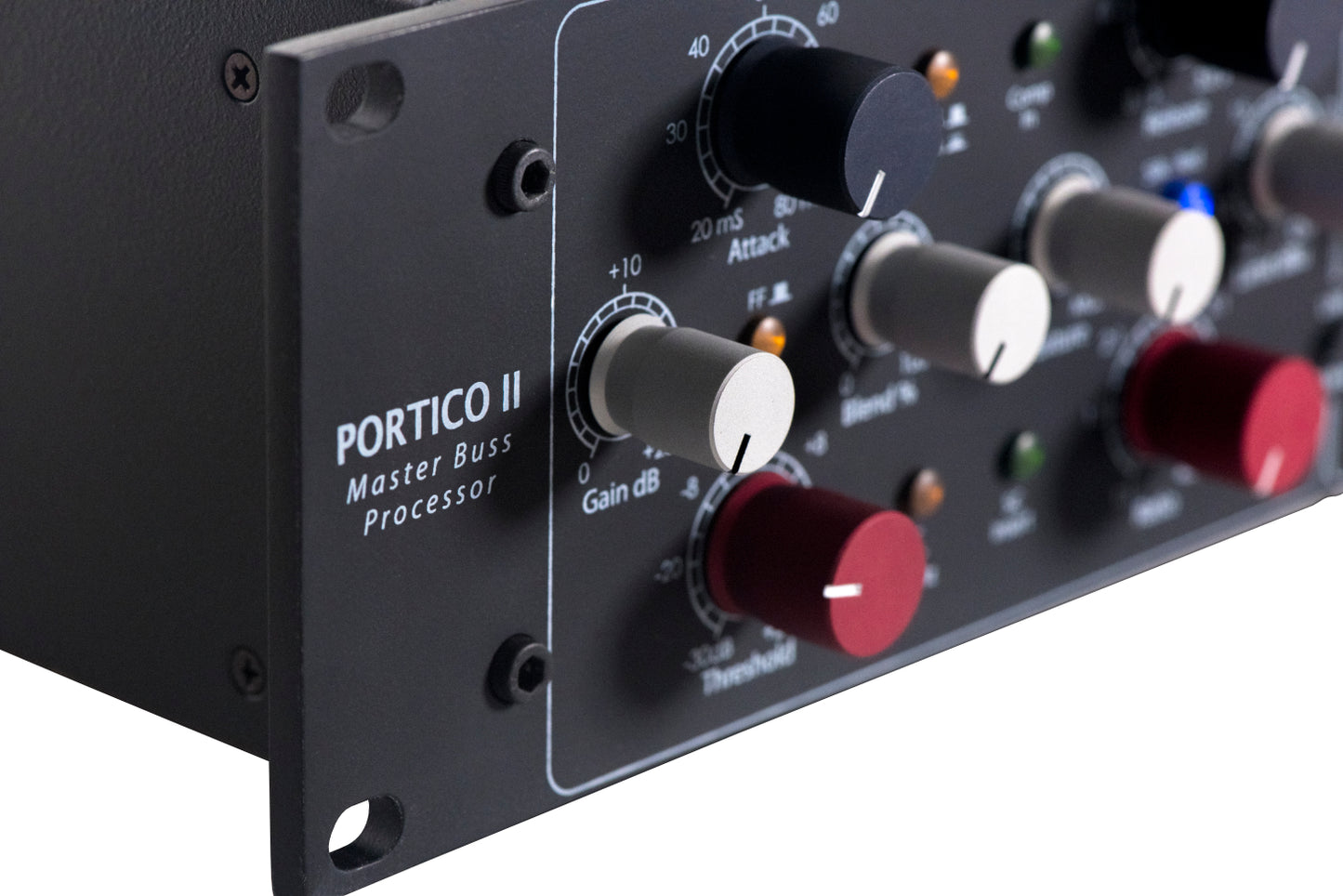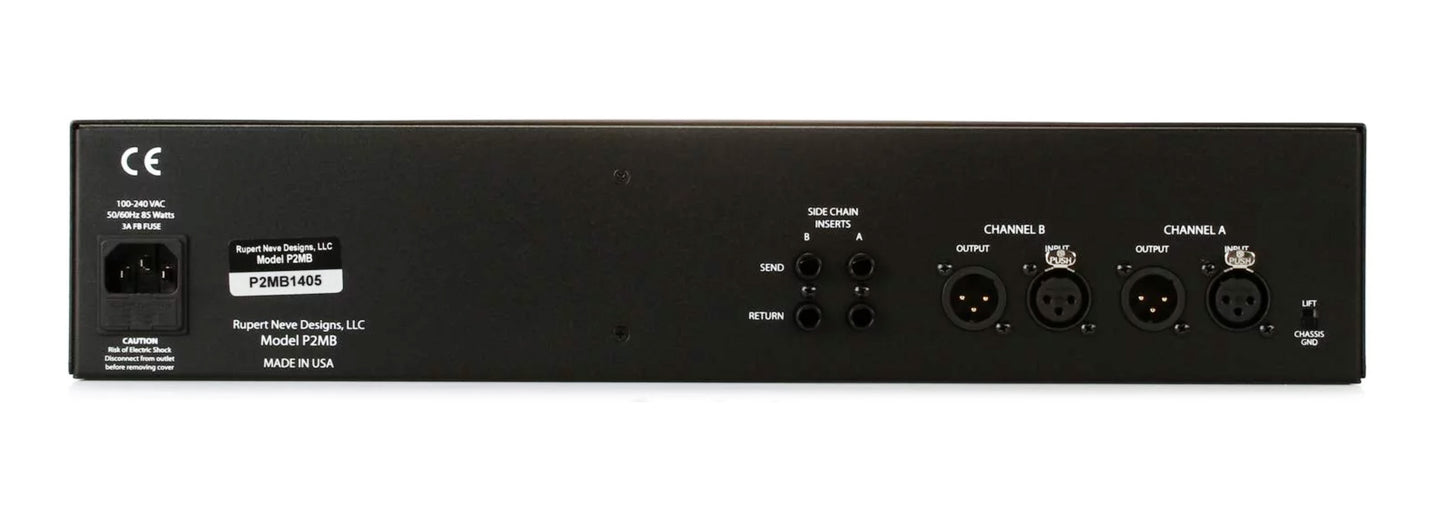Rupert Neve Designs Portico II Master Buss Processor Shop all Rupert Neve Designs
Product Description
The Portico II Master Buss Processor is based around Rupert Neve Designs flagship console, the 5088 Mixer, and the Portico II Channel. Combining the high voltage, discrete and class A signal paths, the MBP is an audio processor that extends the limits of what a traditional 2-channel compressor can do. Either you are a mastering, mixing, tracking or even a FOH engineer, from EDM to chamber music, the Master Buss Processor has become one of Rupert Neve Designs' best-selling units.
With input and output transformers designed and implemented by Mr. Rupert Neve, the high-voltage 72V topology found in the Rupert Neve Designs Master Buss Processor (MBP) will integrate flawlessly with virtually any system. Additionally, the MBP incorporates mastering grade detented pots throughout to fine tune its revolutionary dynamics, tone, and stereo field controls. This new topology is a significant evolution of Mr Rupert Neve’s classic designs with appreciable benefits to headroom, dynamic range, distortion, noise, slew rate, bandwidth, and accuracy while still providing for the sweet, musical performance that has been a part of countless recordings.
The MBP’s two compressor sections allow virtually limitless possibilities in dynamics for either dual mono or stereo sources, with controls for ratio, threshold, attack, release, blend, side chain HPF, limit and make up gain. When engaged, the compressor section can be used in both feed-forward and feed-back modes to provide a transparent modern response (feed-forward), or a smoother more musical vintage response (feed-back). Peak mode alters the compressor’s attack to react to peak transients with a roughly .1ms response time. When the Peak switch is disengaged, the compressor responds to the RMS signal in conjunction with the attack and release settings. SC HPF inserts a high pass filter at 250 Hz into the side chain to deal with intense low frequencies that may skew the response of the VCA with certain songs and instruments. “Blend” creates a parallel mix between the compressed and dry signals. By mixing the compressed and dry signals, it is possible to increase the volume of quieter elements in the source material (for instance, delicate snare brushing on a track with much louder hits), while maintaining a natural dynamic feel for the louder elements.
The Portico II Master Buss Processor also features an extremely versatile, transparent and musical limiter. At first glance, one might scoff at the single knob operation, however this limiter is extremely intelligent, knowing how to appropriately respond to the various signals presented to it. Our new Adaptive Release Technology is behind this revolutionary performance. Using a blend of release time constants, this limiter will simultaneously respond quickly to transient material (such as the “snap” of a snare drum) and slowly to more sluggish signals (such as a bass guitar). This configuration allows the limiter to grab a transient and let go just an instant later, while also dealing with more constant signals in a slower, more musical way. In this manner, the MBP Limiter can provide a much more aggressive amount of limiting than typically possible, while maintaining the essential character of the music and remaining free of the modulation distortion usually found in a fast acting limiter.
The stereo field editor on the MBP takes traditional M-S techniques to new heights with width, depth and corresponding bandpass filters. The width control enables the user to increase or decrease the width of a stereo image (wide/mono) and adjust the amount of ambiance inherent in the recording. Because the amount of effect the width control has is entirely dependent on the amount of stereo information in the original source material and the interplay between the stereo field editor′s other controls, listening and experimentation are essential for the best results.
The depth control of the MBP adjusts the spatial positioning of elements in the sound stage. Center-panned elements like solo instrument or vocal can be brought forward in a mix, in relation to supporting instruments. In many cases, these same elements may be virtually eliminated without adversely affecting the music bed. Used in conjunction, the depth and width controls effectively alter the perceived room ambience and dimension. To fine tune the SFE, there are individual filters that allow a fine tuning of what information is reintroduced from the width and depth circuits, thus tailoring each effect to a specific bandwidth.







